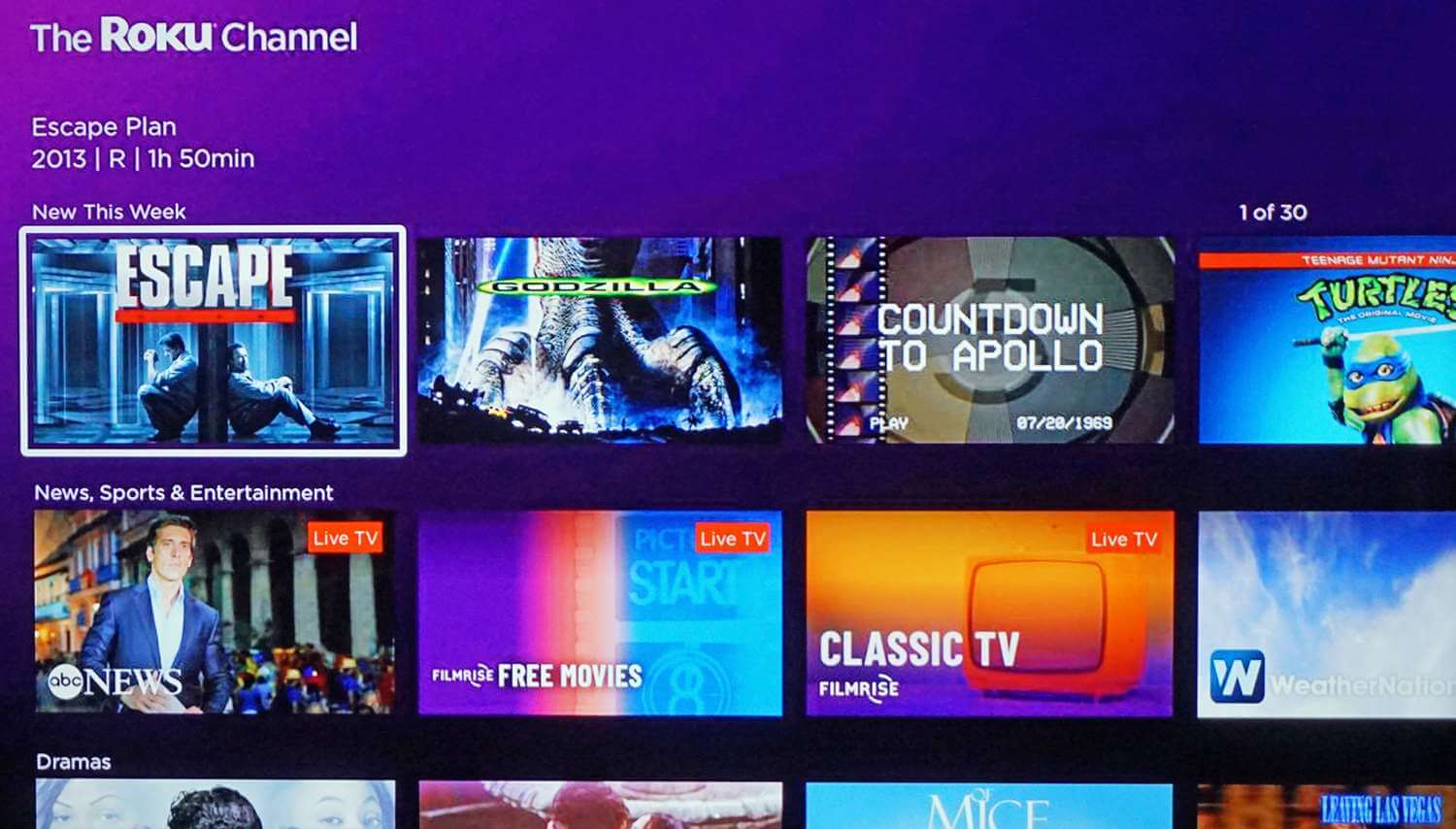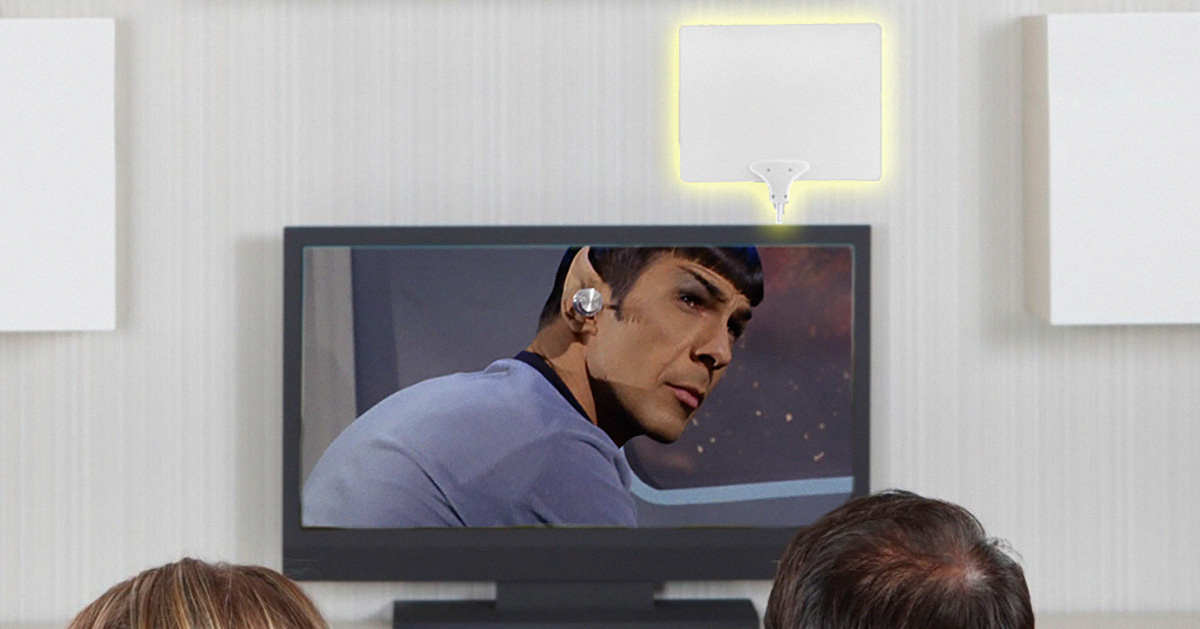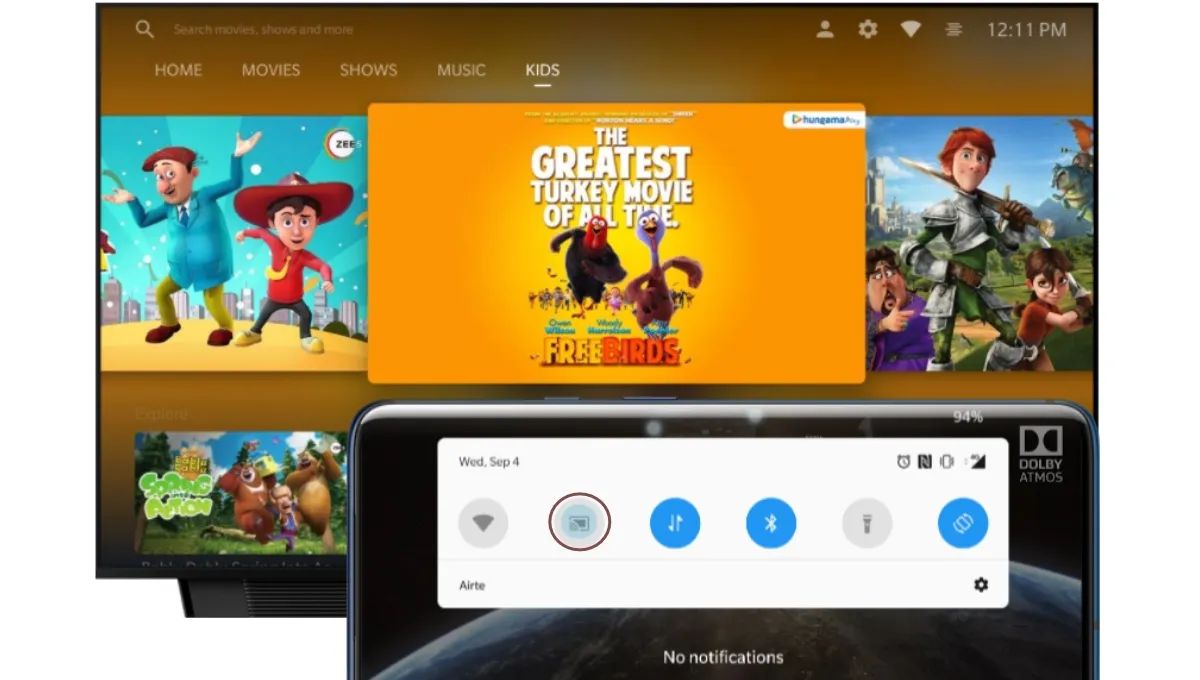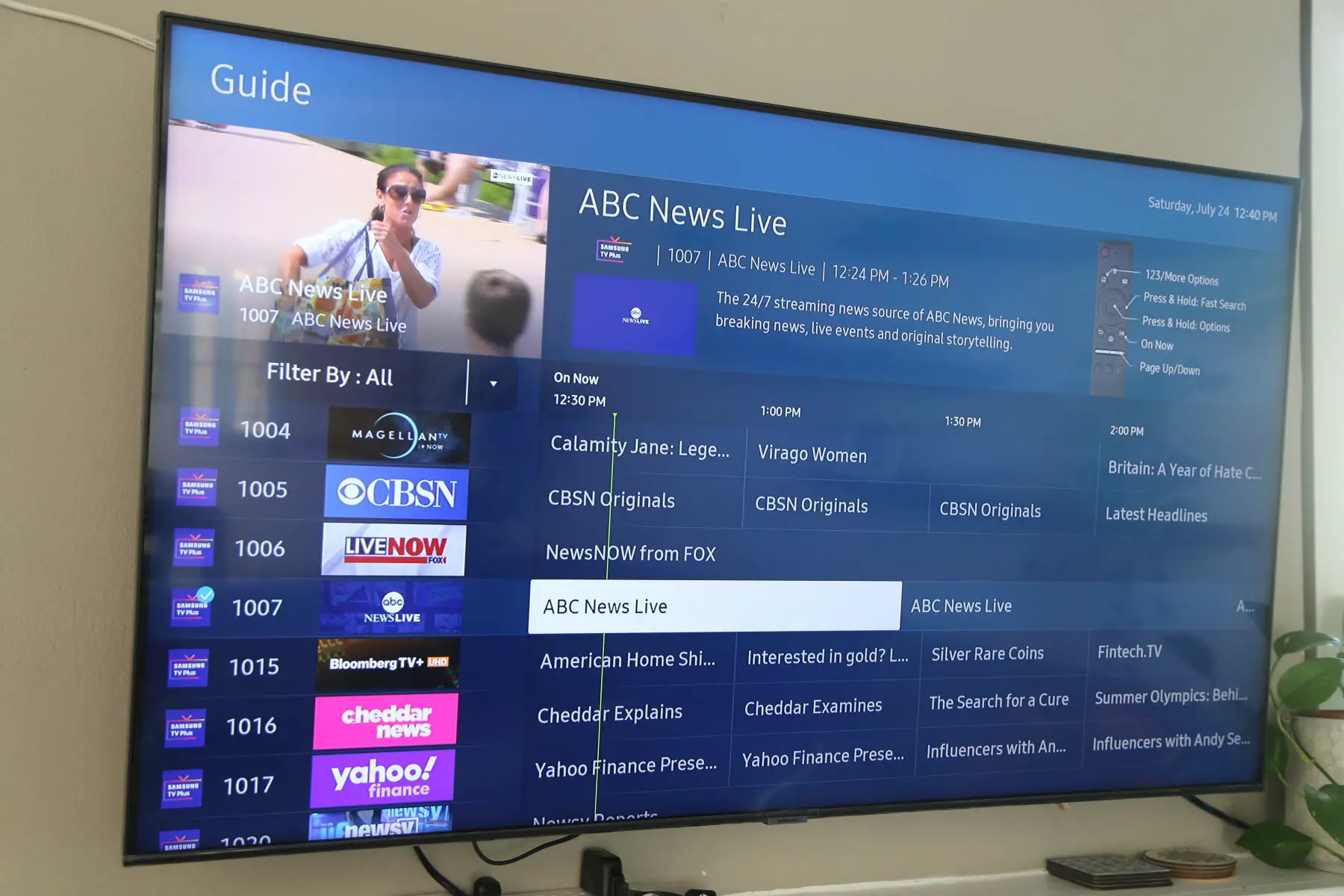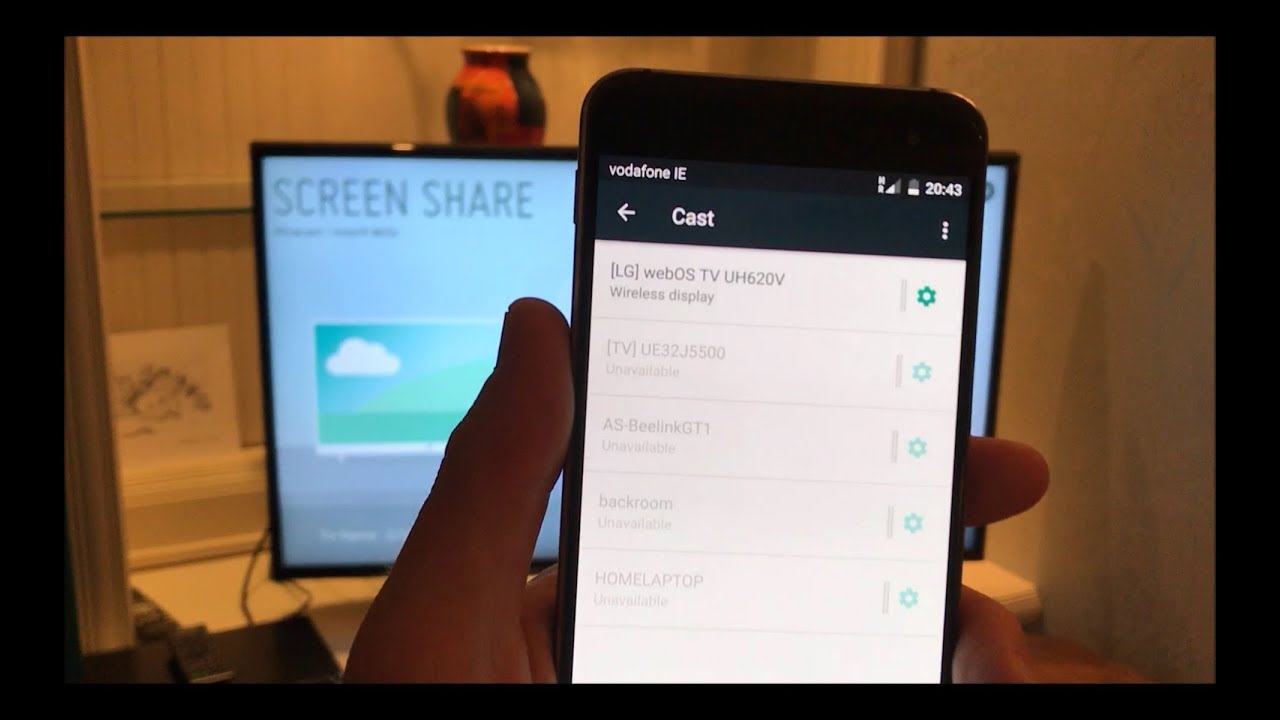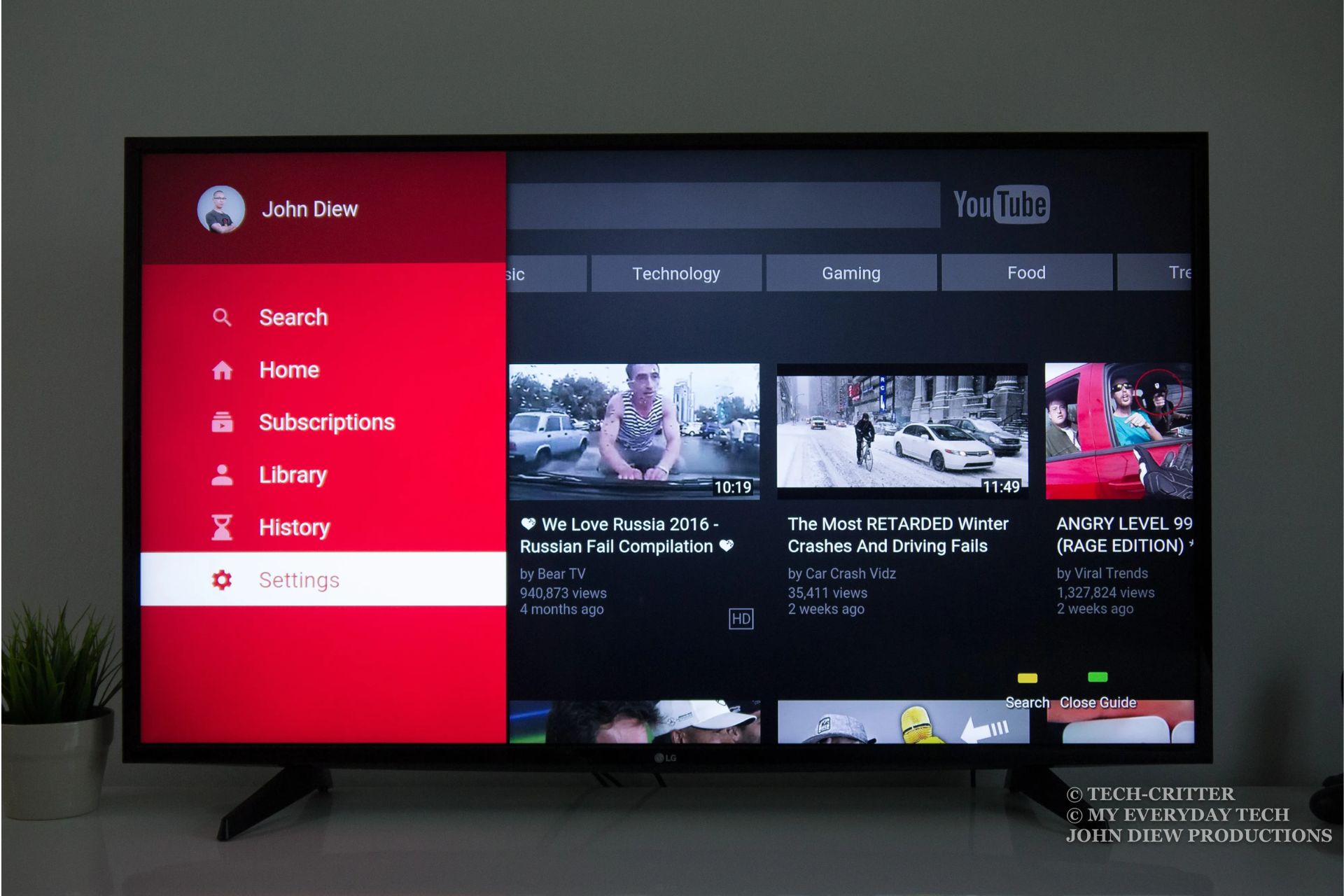Introduction
Technology has transformed the way we consume entertainment, and one of the most significant advancements in recent years has been the development of Smart TVs. Gone are the days when a television was only capable of displaying cable or satellite channels. With a Smart TV, you can access a wide range of online content, stream your favorite shows and movies, browse the internet, and even play games.
But what if you have an older TV that doesn’t have smart features? Thankfully, there are several options available that can help you transform your TV into a Smart TV without breaking the bank. In this article, we will explore various ways to make your TV smarter and enjoy all the benefits of a Smart TV experience.
We will discuss options such as using a Smart TV stick, a set-top box, a game console, a media streaming device, a smart DVD player, a smart Blu-ray player, a PC or laptop, and even a mobile device. Each option has its own advantages and considerations, allowing you to choose the one that best fits your needs and budget.
By the end of this article, you will have a clear understanding of the different methods available to transform your TV into a Smart TV and make an informed decision on which option works best for you. So, let’s dive in and explore the world of Smart TVs!
What is a Smart TV?
A Smart TV, also known as a connected TV, is a television set with integrated internet connectivity and interactive features. Unlike traditional TVs, which rely solely on broadcast signals or external devices for content, a Smart TV allows you to access online streaming services, browse the internet, download apps, and much more.
Smart TVs are equipped with an operating system that provides a user-friendly interface, allowing you to navigate through various features and settings. They often have built-in Wi-Fi or Ethernet connectivity, enabling seamless internet access without the need for additional devices.
With a Smart TV, you can stream your favorite movies and TV shows from popular platforms like Netflix, Hulu, Amazon Prime Video, and YouTube. You can also access social media platforms, check emails, play games, and even browse the web from the comfort of your living room.
One of the key advantages of a Smart TV is its ability to offer personalized and on-demand content. For example, many Smart TVs have recommendation systems that suggest shows and movies based on your viewing history and preferences. This can save you time and effort in searching for new content.
In addition to online content, Smart TVs often offer traditional TV features like over-the-air broadcasting, cable or satellite connectivity, and HDMI input options for connecting external devices like gaming consoles or Blu-ray players.
It’s important to note that the capabilities and features of Smart TVs can vary depending on the brand and model. Some offer more advanced functionalities such as voice control, screen mirroring, and integration with smart home devices, while others may have a more basic set of features.
Overall, Smart TVs provide a convenient and versatile way to consume multimedia content from various sources, giving you more control over your entertainment choices and enhancing your TV viewing experience.
Benefits of Having a Smart TV
Investing in a Smart TV can bring a wide range of benefits to your entertainment setup. Here are some of the key advantages of having a Smart TV:
- Access to Online Streaming Services: With a Smart TV, you can access popular streaming services like Netflix, Hulu, and Amazon Prime Video directly on your television screen. Say goodbye to connecting external devices or switching inputs, as you can stream your favorite shows and movies seamlessly.
- Web Browsing and Social Media: Smart TVs allow you to browse the internet and access your favorite websites directly from your TV screen. You can also stay connected with friends and family through social media platforms such as Facebook, Twitter, and Instagram – all from the comfort of your living room.
- App Store and Apps: Just like your smartphone, Smart TVs have their own app stores where you can download and install a variety of applications. Whether you’re looking for weather updates, news, sports, games, or educational apps, the possibilities are endless.
- Personalized Recommendations: Smart TVs analyze your viewing habits and provide personalized recommendations based on your preferences. This means you’ll spend less time searching for new content and more time enjoying the shows and movies that match your interests.
- Enhanced Gaming Experience: Many Smart TVs support gaming, either through built-in games or by connecting a gaming console. Enjoy playing your favorite video games on a bigger screen, immersing yourself in the action and experiencing gaming in a whole new way.
- Home Automation Integration: Some Smart TVs are equipped with smart home integration features, allowing you to control compatible devices such as lights, thermostats, and security systems directly from your TV screen. This adds convenience and simplifies your home automation setup.
- Cloud Storage and USB Playback: With a Smart TV, you can easily access cloud storage platforms like Dropbox or Google Drive to view photos, videos, and documents on a large screen. Additionally, most Smart TVs have USB ports for playback of media files from external storage devices.
These are just a few of the many benefits that come with owning a Smart TV. With their versatility, convenience, and access to a wide range of content, Smart TVs have become a must-have for modern home entertainment systems.
Option 1: Using a Smart TV Stick
If you already have a TV that doesn’t have smart features, one of the most accessible and cost-effective options to transform your TV into a Smart TV is by using a Smart TV stick.
A Smart TV stick is a small device that resembles a USB flash drive and connects to the HDMI port on your TV. It essentially turns your non-smart TV into a smart one by providing access to online streaming services, apps, and other smart features.
To use a Smart TV stick, all you need to do is insert it into the HDMI port on your TV and connect it to a power source. Once connected, you can navigate through the smart interface using the remote control or a companion mobile app.
Smart TV sticks are typically powered by popular operating systems like Android or Fire OS, which offer a user-friendly interface and access to a wide range of apps and streaming services.
These sticks usually require an internet connection, which can be established through built-in Wi-Fi or via an Ethernet cable connection. With an internet connection, you can stream your favorite TV shows, movies, and music from platforms like Netflix, Hulu, YouTube, and Spotify.
One of the advantages of using a Smart TV stick is its portability. You can easily disconnect the stick and take it with you when traveling or visiting friends, allowing you to enjoy your smart features on any TV with an HDMI port.
It’s important to note that while a Smart TV stick can provide smart features, it may not be as powerful or versatile as a built-in Smart TV. The performance and capabilities can vary depending on the brand and model of the stick.
Overall, using a Smart TV stick is an affordable and straightforward option to add smart functionality to your non-smart TV. It offers a convenient way to access online content and enjoy a smart TV experience without investing in an entirely new television.
Option 2: Using a Set-Top Box
Another popular option for transforming your non-smart TV into a Smart TV is by using a set-top box. A set-top box is a device that connects to your TV and provides access to online content and other smart features.
Set-top boxes typically come with their own operating system and user interface, allowing you to navigate through apps, streaming services, and other features. They connect to your TV through an HDMI cable and require an internet connection to function.
One of the advantages of using a set-top box is the range of features it offers. In addition to providing access to popular streaming services like Netflix, Amazon Prime Video, and Hulu, set-top boxes often have built-in web browsers, social media apps, and various other entertainment options.
Set-top boxes also enable you to download and install additional apps and games from app stores, giving you more customization and flexibility in your smart TV experience. Some set-top boxes may even offer voice control capabilities, making it even easier to search for content or navigate through the interface.
When choosing a set-top box, consider factors such as the available apps and streaming services, the user interface, and the overall performance of the device. It’s also worth checking if the set-top box supports the resolution and audio formats you desire, particularly if you have a high-definition TV.
Keep in mind that set-top boxes require a separate remote control to navigate, so ensure that you choose one with an intuitive and user-friendly remote. Some set-top boxes also offer companion mobile apps, which allow you to control the device using your smartphone or tablet.
While set-top boxes offer a great way to add smart features to your existing TV, they may require additional setup and configuration compared to other options. However, the payoff is a versatile and powerful solution that can turn your non-smart TV into a full-fledged Smart TV experience.
Option 3: Using a Game Console
If you’re a gaming enthusiast, turning your non-smart TV into a Smart TV can be as easy as utilizing your existing game console.
Most modern game consoles, such as the Playstation, Xbox, and Nintendo Switch, are not just limited to gaming. They also come equipped with various multimedia features and streaming capabilities, effectively making them a powerful entertainment hub.
Connecting your game console to your TV allows you to access popular streaming services like Netflix, Hulu, and Amazon Prime Video. You can stream movies, TV shows, and even live sports events directly from your console.
Setting up your game console as a media center is usually a straightforward process. Simply connect the console to your TV using an HDMI cable and configure the display settings. You might need to sign in with your streaming service accounts or download the corresponding apps from the console’s app store.
Using a game console as a Smart TV solution offers several advantages. Firstly, you can enjoy the benefits of a Smart TV and a gaming console all in one device, saving space and reducing clutter in your entertainment setup.
Secondly, game consoles often provide a seamless and intuitive user interface, allowing you to navigate through different apps and streaming services with ease. They may also offer additional features such as voice control and social media integration.
Furthermore, game consoles are designed to deliver high-quality graphics and audio, offering an immersive viewing experience for your favorite movies, shows, and games. They usually support high-definition resolutions and can handle streaming content smoothly.
It’s important to note that while using a game console as a Smart TV option can be a convenient solution, it does require owning a compatible console. Additionally, keep in mind that accessing streaming services on a game console may require an active subscription to those services.
In summary, if you already own a game console, utilizing it as a Smart TV option is an excellent way to enjoy both gaming and multimedia entertainment on your non-smart TV.
Option 4: Using a Media Streaming Device
If you want to make your non-smart TV smarter, using a dedicated media streaming device is another popular option.
A media streaming device is a compact device that connects to your TV via HDMI and enables you to stream content from various online platforms. These devices typically come with a user-friendly interface and provide access to a wide range of streaming services, apps, and even games.
One of the most well-known media streaming devices is the Roku Streaming Stick, which offers a vast selection of channels, including popular streaming services like Netflix, Hulu, and Amazon Prime Video. Other notable options include the Amazon Fire TV Stick and the Google Chromecast.
Using a media streaming device is simple. Just plug it into your TV’s HDMI port, connect it to your home network either via Wi-Fi or Ethernet, and follow the on-screen setup instructions. Once set up, you can navigate through the device’s interface using either a remote control or a companion mobile app.
Media streaming devices usually provide additional features such as voice control, personalized recommendations, and the ability to cast media from your mobile device to the TV. They also allow you to download and install additional apps and games from their respective app stores.
One of the advantages of using a media streaming device is that it offers a dedicated and optimized streaming experience. These devices are specifically designed for streaming content, ensuring smooth playback and high-quality visuals.
Furthermore, media streaming devices are often more affordable compared to buying a brand new Smart TV. This makes it a cost-effective solution for those looking to upgrade their TV without spending a significant amount of money.
However, it’s essential to consider the compatibility of the media streaming device and the streaming services you wish to access. Some devices may have limited app availability or not support certain streaming platforms.
With a media streaming device, you can transform your non-smart TV into a Smart TV with ease, gaining access to a vast library of content and enjoying a seamless streaming experience.
Option 5: Using a Smart DVD Player
If you have a DVD collection and want to add some smart features to your TV, using a Smart DVD player is an excellent option.
A Smart DVD player combines the functionality of a regular DVD player with smart capabilities, allowing you to not only watch DVDs but also access online streaming services and apps.
Setting up a Smart DVD player is straightforward. Simply connect it to your TV using an HDMI cable, and you’re ready to go. Most Smart DVD players require an internet connection for accessing online content, which can be established using either built-in Wi-Fi or an Ethernet cable connection.
Once connected, you can access popular streaming services like Netflix, Hulu, and Amazon Prime Video directly from the Smart DVD player’s interface. You can stream your favorite movies and TV shows, just like you would on a dedicated streaming device.
In addition to streaming services, Smart DVD players often have a variety of other apps available for download. These apps can range from news and weather apps to social media platforms and even games.
One advantage of using a Smart DVD player is that it combines multiple devices into one. Instead of having a separate DVD player and a streaming device, you can simplify your setup by using a single device for both functions.
Additionally, Smart DVD players often provide a user-friendly interface for easy navigation through menus and settings. They may also support features like parental controls, personalized recommendations, and compatibility with various audio and video formats.
It’s important to note that the smart features of DVD players may vary depending on the brand and model. Some players may offer more advanced functionalities and a broader selection of apps and streaming options.
If you already have a DVD collection and want to make your TV smarter without purchasing additional devices, a Smart DVD player offers a convenient and cost-effective solution.
With a Smart DVD player, you can combine your love for physical media with the flexibility of accessing online content, giving you the best of both worlds.
Option 6: Using a Smart Blu-Ray Player
If you’re looking to upgrade your non-smart TV and take advantage of Blu-ray capabilities, using a Smart Blu-ray player is an excellent choice.
A Smart Blu-ray player combines the functionality of a traditional Blu-ray player with smart features, allowing you to not only play high-definition Blu-ray discs but also access online content and streaming services.
Setting up a Smart Blu-ray player is as simple as connecting it to your TV using an HDMI cable. Most Smart Blu-ray players require an internet connection to access online content and can be connected via built-in Wi-Fi or an Ethernet cable.
Once connected, you can enjoy your favorite Blu-ray movies and take advantage of built-in apps and streaming services. Popular streaming platforms like Netflix, Hulu, and Amazon Prime Video are often pre-installed or available for download on Smart Blu-ray players.
In addition to streaming services, Smart Blu-ray players often offer a wide range of other smart features. These can include browsing the internet, checking email, accessing social media platforms, downloading additional apps, and even playing games.
One advantage of using a Smart Blu-ray player is that it eliminates the need for separate devices. By combining a Blu-ray player and smart functionality into one device, you can declutter your entertainment setup and save space.
Another benefit is the ability to enjoy high-definition Blu-ray playback, which provides superior video and audio quality compared to standard DVDs. Smart Blu-ray players often support various audio and video formats, giving you a truly immersive viewing experience.
It’s important to note that the smart features and available apps can vary depending on the brand and model of the Smart Blu-ray player. Some models may offer a more extensive selection of apps and have more advanced smart functionalities.
If you’re a fan of Blu-ray movies and want to add smart capabilities to your TV, a Smart Blu-ray player is a great option. With its ability to play high-definition content and access online streaming services, you can enhance your entertainment experience and enjoy the best of both worlds.
Option 7: Using a PC or Laptop
If you have a PC or laptop with internet connectivity, you can easily transform your non-smart TV into a Smart TV by using it as a multimedia hub.
All you need to do is connect your computer to your TV using an HDMI cable. Most modern computers and laptops have an HDMI output port that allows you to transmit both audio and video signals to your TV.
Once connected, you can use your TV as a large monitor and take advantage of all the smart features your computer offers. This includes accessing online streaming services, browsing the internet, watching YouTube videos, playing games, and much more.
If your computer is running Windows 10, you can use the built-in “Cast to Device” feature to wirelessly stream media content from your computer to the TV, eliminating the need for an HDMI cable.
By utilizing your PC or laptop as a Smart TV option, you have the advantage of a full desktop experience, a wide range of streaming services, and the ability to install any additional apps or software you desire.
However, it’s worth considering that using a PC or laptop as a Smart TV option may require some additional configuration and setup. You may need to adjust display settings, audio output, and optimize the resolution to match your TV’s capabilities.
Furthermore, keep in mind that using a PC or laptop as a Smart TV option requires having your computer near your TV, which may not be ideal for everyone based on their setup or desired convenience.
Overall, using a PC or laptop as a Smart TV option provides a flexible and versatile solution. It allows you to utilize your existing technology to access online content and enjoy a multitude of smart features on your non-smart TV.
Option 8: Using a Mobile Device
If you’re looking for a convenient and portable way to make your non-smart TV smarter, using a mobile device is an excellent option.
With the rise of mobile technology, many smartphones and tablets come equipped with powerful processors, high-resolution screens, and a wide range of multimedia capabilities. Leveraging your mobile device allows you to access smart features and stream content directly to your TV.
To connect your mobile device to your TV, you can use an HDMI adapter or a screencasting device such as Chromecast or Apple TV. These devices connect to your TV’s HDMI port and allow you to mirror the screen of your mobile device onto the TV.
Once connected, you can access your favorite streaming services, watch online videos, play games, browse social media, and more – all on the big screen of your TV.
The advantage of using a mobile device is its portability. You can carry your device with you wherever you go and easily connect it to any TV with an HDMI port, whether it’s in your living room, a hotel room, or a friend’s house.
In addition to streaming content, mobile devices often have companion apps that further enhance the smart TV experience. These apps allow you to control your TV, access additional features, and even serve as a remote control.
However, it’s important to note that using a mobile device as a Smart TV option heavily relies on the capabilities and compatibility of your specific device and the TV you’re connecting to. Ensure that your mobile device and TV support the necessary connections and technologies to establish a smooth streaming experience.
It’s also worth considering the battery life of your mobile device when using it as a Smart TV option. Streaming content for extended periods can drain the battery quickly, so make sure you have a charging solution available if needed.
In summary, utilizing your mobile device as a Smart TV option offers convenience, portability, and access to a wide range of smart features and content. It’s a versatile solution that allows you to enjoy the benefits of a Smart TV on your non-smart television.
Conclusion
Transforming your non-smart TV into a Smart TV has never been easier with the plethora of options available. Whether you choose to use a Smart TV stick, a set-top box, a game console, a media streaming device, a smart DVD player, a smart Blu-ray player, a PC or laptop, or even a mobile device, each option offers unique advantages and features.
Smart TVs bring a whole new level of convenience and entertainment to your living room. Accessing online streaming services, browsing the internet, playing games, and enjoying personalized recommendations can enhance your TV viewing experience and keep you entertained for hours.
Consider your specific needs, preferences, and budget when selecting the option that best suits you. Factors such as ease of setup, available apps and streaming platforms, user interface, and compatibility with your TV are essential to consider before making a decision.
It’s worth noting that while these devices and methods can add smart functionality to your TV, they may not offer the same level of features or performance as a built-in Smart TV. However, they provide a cost-effective alternative and allow you to enjoy the benefits of a Smart TV without investing in a new television.
Choose the option that aligns with your needs and budget, and enjoy the world of smart entertainment that awaits you. Whether you’re streaming your favorite movies, checking out the latest TV shows, or exploring the endless possibilities of smart features, transforming your non-smart TV into a Smart TV will undoubtedly elevate your home entertainment experience.









